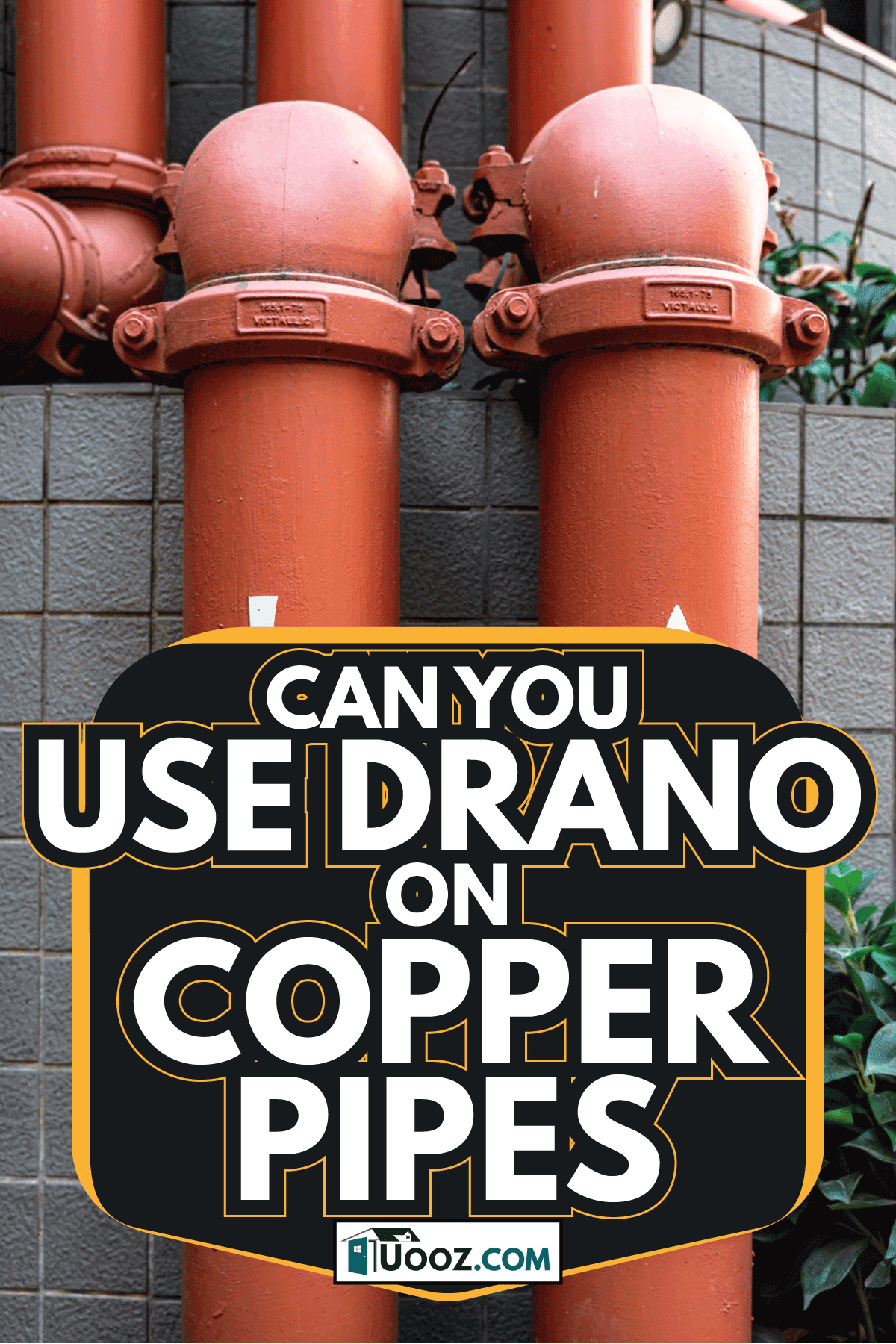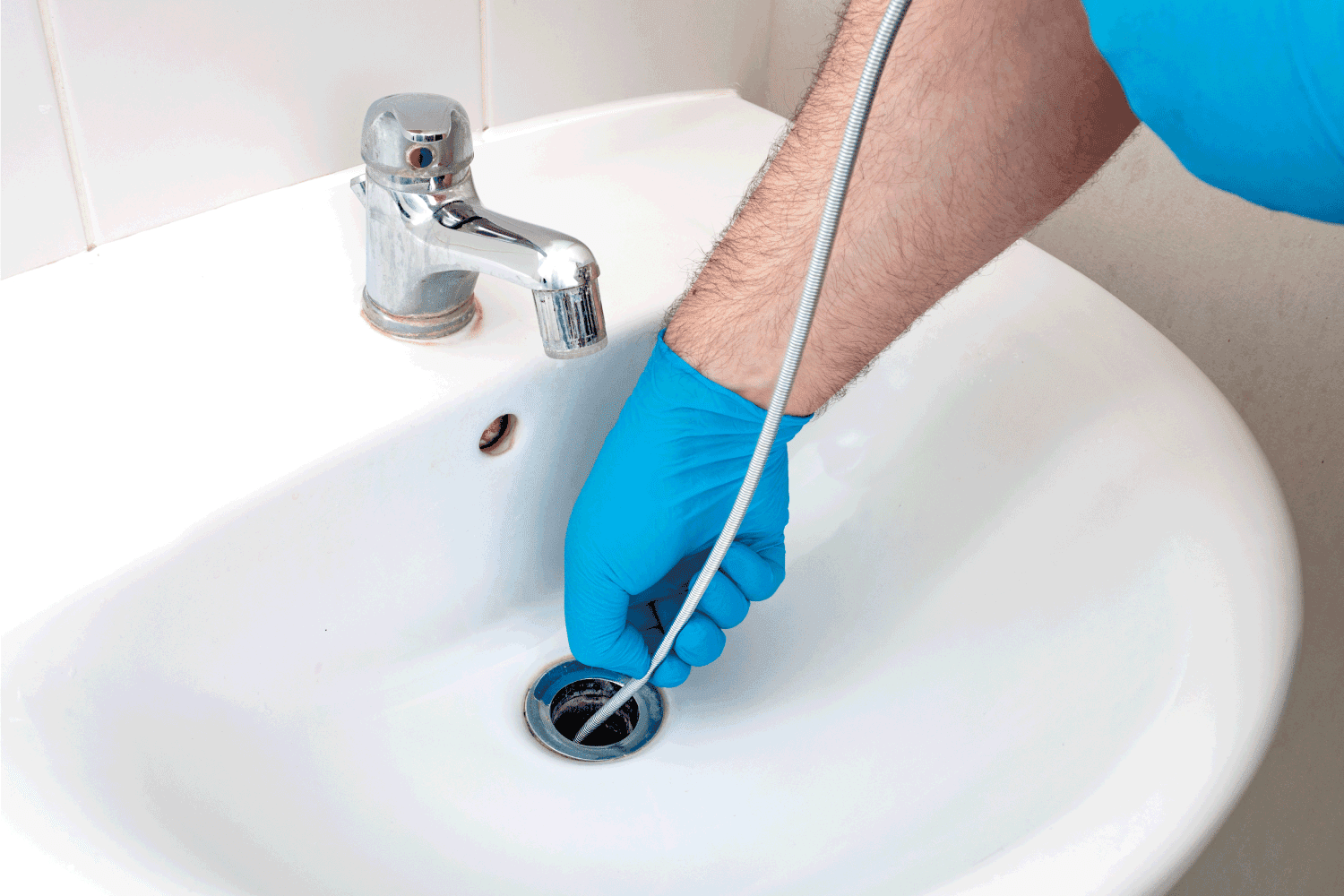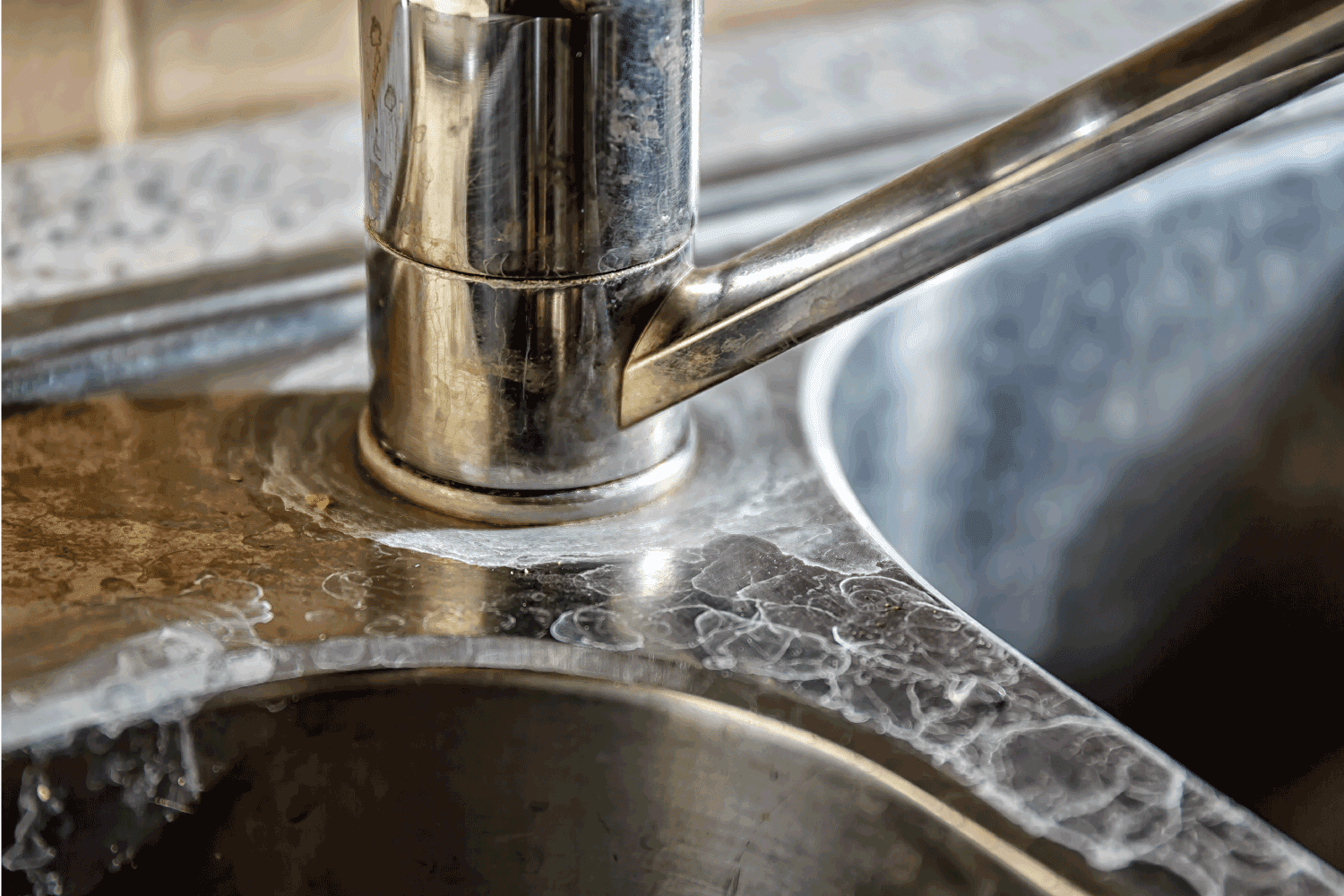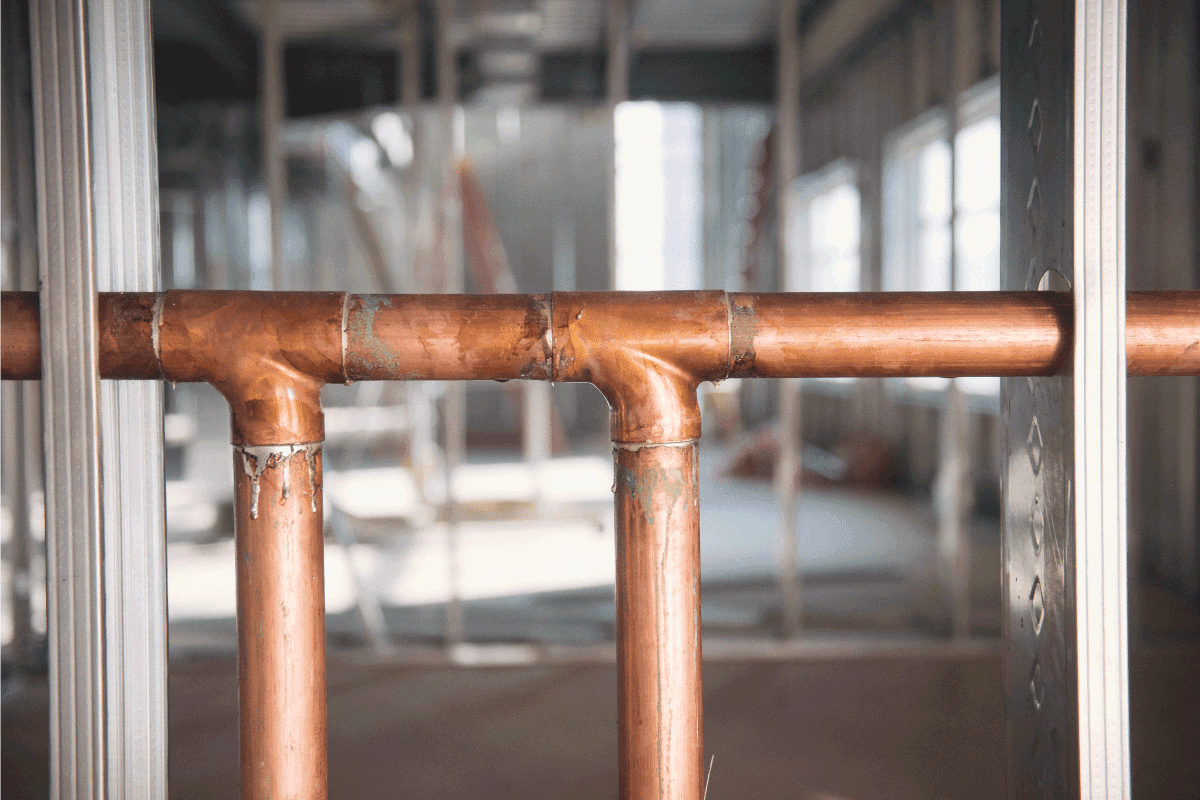Every homeowner has experienced the inconvenience of having a clogged sink or shower at one time or another. You want to be prepared the next time it happens again by keeping a drain cleaner on hand. If you're on the fence about using Drano for your copper pipes, this article will help you decide. We've researched if Drano will harm your pipes, and here's what we found out.
Manufacturers of these products say that Drano is safe to use on copper pipes. In particular, their Max Gel Clog Remover contains special ingredients to prevent corrosion. However, many plumbers advise homeowners to use natural products instead for treating clogged pipes so that they can be sure about their safety and help protect the environment as well.
Keep reading so we can shed more light regarding the use of Drano products. We'll also give you safer and better alternatives for unclogging your drain. We'll also tell you if drain snakes can damage your pipes and how you can remove those mineral deposits on your pipes. Let's get started.

Will Drano harm your copper pipes?
Drano offers a wide range of products to help you clean your drains and remove those nasty clogs on your pipes. Their products make it so easy and convenient for homeowners to deal with their clogged pipes and get their water systems back in good working condition in no time.
However, there have been concerns regarding their effects on copper pipes and the plumbing system. But the manufacturers assured customers that their products are safe to use on metal pipes and won't damage plumbing. One of their collection, Drano Max Gel Clog Remover, has been specially formulated to prevent the corrosion of pipes.
Click here to see Max Gel on Amazon.
Just follow the instructions on the label for proper usage and guidelines regarding the specific Drano product that you need to select for your particular clogging issue.
When should you not use Drano?
Despite the manufacturer's assurance regarding the safety of their products, many expert plumbers still advise homeowners to be cautious when using Drano. Since it is a chemical drain cleaner, it contains harmful substances that can damage not just your pipes but also pose a threat to you and our environment when you use it.
Despite their claim that they use a special ingredient in one of their products to inhibit corrosion, most of their other ingredients are highly corrosive. These include lye and bleach. They also have high alkaline and pH content which contribute further to corrosion. This means Drano can damage your pipes in the long run.
No Drano for Toilets
It also isn't recommended to use Drano on your toilets. Their clog removers work by raising the temperature on your pipes to almost boiling point to be able to dissolve the material causing the obstruction. Toilets cannot handle this level of heat and may cause them to crack.
Even the manufacturers warn users about this saying that most of their products are ineffective in removing toilet clogs except for their Drano Max Build-up Remover. Still, it won't be any use in a completely clogged toilet.
Another situation when you shouldn't use Drano is when you've already used another cleaning product on the drain. It may cause a chemical reaction and release toxic fumes that can harm you. Also, don't use it with a plunger as it can cause the chemical to splash on your body and cause irritation.
No Drano for Old Pipes
Lastly, don't use Drano when your pipes are already old. They might be corroded already, and applying Drano can worsen the situation. The chemicals are strong enough to break the pipes apart which will result in more damage and costly repair.
What is a good substitute for Drano?
The good news is that there are better and safer ways to unclog your drain. You don't need to use harmful chemical substances. Here are just some of the most popular DIY methods that you can try.
White vinegar and baking soda
You need to pour boiling water into the clogged drain and wait for it to clear. Meanwhile, mix one cup of water with one cup of white vinegar. Pour a half cup of baking soda on the cleared sink followed by the vinegar-water solution. Let it sit there for one hour or more so that the mixture can work some magic in your drain. Pour hot water on the drain again and see if it worked.
Washing soda
Pour hot water down the drain, followed by washing soda. Then pour more hot water into the drain and wait for five minutes or more.
Cola
Pour two liters of cola over the clogged drain. Let it sit for about an hour, then flush it with hot water. This is best used for stubborn clogs.
Tools
Sometimes there's no other way but to remove the clogs by yourself. You can use a plunger or drain snakes to help you with this task.
These are just some of the ways recommended by experts for you to get rid of those clogs and have your drains working properly again. But if you suspect that the clogging issue is more serious than what you can handle, it's better to call a licensed plumber to prevent further damage to your pipes.

Can snaking damage copper pipes?
Drain snakes, also called plumbing augers or plumbing snakes, are a handy tool that you can buy to help you manually clear the clog in your drain. They are usually made of plastic or wire coil and can have either a crank or motor at the handle. You insert them into the pipe to be able to reach the source of the clog. Then you either use the auger to break up the clog or pull out the reason for the obstruction.
There are four different types of drain snakes. These are:
- Top Snakes: These are small and usually made of plastic. They have a length of 25 feet and can be used to clear minor clogs.
- Toilet Augers: These are larger and commonly made of metal. They are specially designed so as not to damage the surface of the toilet and its protective coating.
- Mini-rooters: These are larger than top snakes. They are usually made of metal, and some may come with a motor to help drive the auger into the pipe.
- Large Drain Machines: These are heavy-duty augers typically used for commercial purposes.
It is important that you use the right type and size of drain snake for the clog that you're dealing with. If you have to unclog your toilet, use a toilet auger. If you're clearing the obstruction in your sink pipe, check if the top snake would work.
If it's not the right size, the drain snake can loop back on itself and scuff the interior of the drain pipe. This could lead to damages, especially if the pipes are old. Parts might chip off, adding to the blocking or worse, causing a leak in the pipe system.
The improper use of drain snakes can also damage your copper pipes. Some require an adequate amount of expertise to be able to maneuver the augers inside the pipe effectively and safely.
Plumbing snakes won't necessarily damage your copper pipes if you know how to use them and as long as you're using the right tool for the job.
Check out this set of plumbing snakes on Amazon.
How do you remove mineral deposits from copper pipes?

The mineral deposits in your copper pipes are caused by hard water. It contains a high level of minerals such as calcium and magnesium. While it doesn't present any health risk, it does cause a nuisance to homeowners, especially when the minerals buildup over time.
Good thing, these are easy enough to clean and you probably already have the stuff that you will be needing for this task. Prepare your white vinegar, baking soda or cream of tartar, a plastic bowl, and paper towels.
Procedure:
- Pour the vinegar into your plastic bowl.
- Soak several sheets of paper towels in the vinegar. Remove the excess.
- Wrap the paper towels around the affected pipes and let them stand for at least one hour before rinsing the vinegar off.
- If you're not yet satisfied with the outcome, make a paste by mixing a few drops of vinegar with your baking soda or cream of tartar.
- Dip the paper towel into the paste and scrub it along the affected surface. You can also use a stiff-bristled brush to help you apply more pressure on the pipes.
- Rinse thoroughly.
If the mineral buildup you're trying to address is inside the copper pipes, you can mix vinegar with water and just pour the solution into the drain. You can still put some baking soda to be more effective in cleaning the pipe and removing the clog.

Final Thoughts
When used sparingly and following the instructions for safe application, the right Drano product won't necessarily harm your copper pipes. But it's better for yourself and our environment if you use natural products for removing clogs in your home.
If you would like to read more pipes, you may visit the following links:


